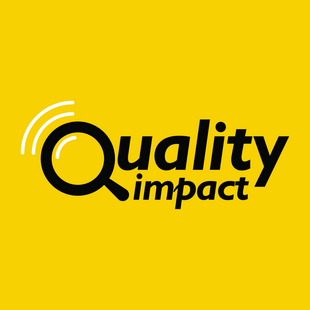
Realising the power of digital auditing to increase corporate value
Progress indicator

As part of the work of the CQI’s Audit special interest group, Ian Rosam CQI MCQI of Deep Fathom has produced a guide for quality professionals on the power of digital auditing, with special reference to the future of auditing.
This guide explores the role of audit professionals in supporting organisations engaged in first-, second- and third-party auditing activities. It provides insights into leveraging digitalisation to enhance strategic value, understanding organisational behaviour to improve risk identification, and strengthening the organisation's ability to achieve strategic objectives as well as regulatory compliance.
Who this guide is for
This guide is designed for auditors working across all sectors, whether within or beyond quality management environments. It serves as a resource for those looking to transform auditing into a strategic management tool that supports organisational objectives, compliance and sustainability.
Guidance for audit professionals
- Auditing value proposition
- Proposition for change
- Management system understanding
- Auditor competence
- Artificial intelligence (AI) integration
- Audit process development
- Business communication
- Objective evidence.
What does increasing the value of auditing mean?
1. Key principles of value-driven auditing
To maximise effectiveness, auditing should:
- measure and enhance the return on investment in auditing activities;
- focus on assessing organisational culture and human factors, and their impact on capability and risk;
- use digitalisation to collect and analyse tangible and intangible objective evidence;
- identify risks to strategic objectives while ensuring compliance and regulatory conformance.
2. How auditing supports organisational strategy
Auditing provides leadership teams with actionable insights that go beyond traditional, mechanistic approaches. Key benefits include:
- evaluating tangible and intangible organisational factors;
- providing predictive insights into cultural risks affecting future objectives;
- enabling leadership to make informed decisions based on audit outcomes;
- strengthening stakeholder confidence by demonstrating effective management practices.
"With AI and robotics increasingly handling mechanistic auditing, auditors must shift towards assessing intangible human factors such as organisational culture, leadership effectiveness and systemic risks."
3. Transforming auditing practices
To remain relevant and effective, auditing must evolve from process-driven checks to a holistic, strategic function. Key areas of transformation include:
- adopting digital technologies for evidence collection and analysis;
- developing new auditing techniques that incorporate behavioural and cultural dynamics;
- enhancing audit reporting to provide concise, risk- and value-driven management information;
- integrating audits into routine business reporting and strategic decision-making.
4. Addressing the objective evidence gap
Traditional auditing methods often focus on predetermined processes and tangible evidence, leading to a backward-looking approach. Modern organisations also require:
- a forward-looking, predictive auditing approach based on behavioural outcomes;
- systemic auditing methodologies that manage variety rather than just variation;
- a balance between mechanistic and systemic auditing techniques.
With AI and robotics increasingly handling mechanistic auditing, auditors must shift towards assessing intangible human factors such as organisational culture, leadership effectiveness and systemic risks.
Without academically validated methods for auditing culture and behavioural impacts, an evidence gap remains, reducing the perceived value of auditing. Digital auditing technologies provide an opportunity to address this challenge, introduce new audit techniques and enhance auditing’s strategic relevance.
5. The future of auditing
Auditors are encouraged to:
- use a range of audit methods, maximising strengths and minimising weaknesses;
- build auditing from a compliance-focused activity to a strategic, risk-based business tool;
- engage senior management by aligning audit insights with key performance indicators and business and process objectives at all levels in the organisation.
6. Continuous improvement and feedback
This guide will be periodically reviewed to reflect advancements in auditing methodologies, digital innovation and organisational needs. Stakeholders are encouraged to provide feedback to support the ongoing evolution of auditing practices.
Feedback and contributions to the continuous improvement of this guide are welcome.
Guidance for auditing professionals
1. Auditing value proposition: Evolve the auditing purpose and auditor's role by integrating a hybrid approach that elevates organisational capability, sustainability, conformity, resilience and performance.
Leverage neural networks, maturity models and predictive analytics to provide deeper insights, ensuring audits align with business objectives and foster long-term growth and risk management.
2. Proposition for change: Traditional audit techniques have limitations in managing compliance costs, stakeholder engagement, business value and risk appetite. Embracing digital transformation and strategic auditing methods enhances risk identification, risk mitigation, organisational culture assessment and overall risk management.
This shift positions auditing as a proactive management tool, providing the C-suite with deeper insights, aligning with strategic objectives and driving long-term business sustainability.
3. Management system understanding: Recognise management systems as adaptive and structured, deeply linked to organisational culture. Understand how managing variation and variety influences audit processes.
Emphasise a holistic approach that integrates systemic and mechanistic perspectives, enabling auditors to assess evolving organisational dynamics and enhance the strategic value of auditing.
4. Auditor competence: Strengthen auditor capabilities in risk-based auditing by applying diverse techniques suited to audit scope. Leverage predictive analytics to identify trends and risks.
Develop targeted capability risk reports for different stakeholders, ensuring insights support strategic decision-making, enhance organisational resilience, and align with evolving business and regulatory requirements.
5. AI integration: Leverage AI in the audit process with neural networks, linear regression models and fussy logic, to improve objective evidence analysis. In particular, neural networks help in understanding cultural nuances by identifying complex patterns in data, offering deeper insights and more accurate predictions in diverse contexts.
6. Audit process development: Enhance and refine the audit process by building on traditional methods, including an understanding of neural networks, to address objective evidence gaps. This blended approach supports a risk-based audit framework, improving the management of systems and processes by accurately assessing their capability and understanding potential cultural impacts on results.
7. Business communication: Effectively communicate cultural and performance risks to the C-suite, audit and risk committees as results of using a blended auditing approach in reports. Incorporate maturity and capability models to assess organisational progress, while focusing findings on business objectives.
This approach enhances report value, integrating neural networks (culture), traditional techniques and comprehensive risk analysis, providing optics akin to those used by leadership teams.
8. Objective evidence: Balance forward-looking predictive analytics with backward- looking conformity results, defining objective evidence through a hybrid approach that incorporates cultural and non-cultural elements of the same system. Use maturity and capability models, supported by neural networks, to provide a comprehensive analysis, ensuring insights align with business objectives and risk-management strategies.
*We are grateful to the professionals who make up the CQI’s Audit special interest group who have provided their thoughts and experiences on which to position the future of auditing.
Have your say!
To discuss the information in this guide with like-minded individuals, contact the CQI's Audit special interest group.
The latest from the CQI Podcast

Listen to the Quality Impact podcast, where experts share insights on the evolving role of quality across industries.



